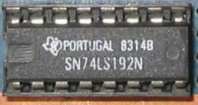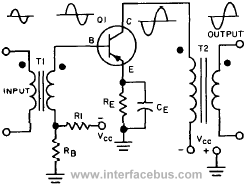Engineering Definitions
"A"
"B"
"C",
"D",
"E",
"F",
"G",
"H",
"I",
"J",
"K",
"L",
"M",
"N",
"O",
"P",
"Q",
"R",
"S",
"T",
"U",
"V",
"W",
"X",
"Y",
"Z"
'Ca' to 'Cas', 'Cat' to 'Cg', 'Ch', 'Ci' to 'Cl', 'Cm' to 'Com',
'Com', 'Com' to 'Con', 'Con' to 'Coo', 'Cop' to 'Cq', 'Cr', 'Cs' to 'Cz'
Copalum Splice. A wire splice that uses a Copalum Crimp connector [and a crimp tool]. See AC Wiring Copalum Splice Connection Graphic [on the companion site].
Copper Loss. The power lost because of the resistance of the conductors. In transformers
the power lost because of current flow through the resistance of the windings. Also shown as the power equation I2R, referring to the power dissipation of the winding.
Cord, Electrical. Two or more insulated conductors contained within a common covering, or twisted together without a common covering.
Cordage. Rope or string. The material that might be found in a cable as a separator or filler material.
Core. Any material that affords a path for magnetic flux lines in a coil. Read more on Transformer Core Types, also see Transformer Core Manufacturers.
Core Loss. The energy dissipated in the ferromagnetic core of a transformer or inductor. The total loss due to eddy currents and hystersis loss in the core of a transformer.
Corona. The discharge of electricity from a conductor with a high potential. A luminous discharge due to ionization of the air surrounding a conductor caused by a voltage gradient exceeding a certain critical value, called the partial discharge (Corona) Inception Voltage (CIV).
Correspondence. The term given to the positions of the rotors of a synchro transmitter and a synchro receiver when both rotors are on 0 degree or displaced from 0 degree by the same angle. See synchro.
COTS. Commercial off-the-shelf equipment that can be purchased through commercial retail or wholesale distributors as is (i.e., equipment that is available as a cataloged item) or with only minor modifications that does not alter its form, fit or functional characteristics. Detailed Definition of COTS.
Coulomb. A measure of the quantity of electricity. One coulomb is equal to 6.28 x 1018 electrons.
Coulomb's Law. Also called the Law of Electric Changes or the Law of Electrostatic Attraction. Coulombs Law states that charged bodies attract or repel each other with a force that is directly proportional to the product of their individual charges and inversely proportional to the square of the distance between them.
Counter. A device that counts input pulses. An IC or circuit that counts clock pulses [74190, 74191,74192 Logic Gates]. A Digital IC counter may either be a Decade counter or Binary counter. A piece of test equipment that counts incoming pulses, as in a Frequency Counter.
Counter EMF. The voltage generated within a coil by a moving magnetic field cutting across the coil
itself. This voltage is in opposition (counter) to the moving field that created it. Counter emf is present
in every motor, generator, transformer, or other inductance winding whenever an alternating current
flows.
Counterpoise. A network of wire connected to a quarter-wave antenna at one end. The network
provides the equivalent of an additional one-fourth wavelength.
Coupling. The process of transferring energy from one point in a circuit to another point, or from one circuit to another. The interaction between two circuits so that energy is transferred from one of the circuits to another. Also refer to capacitive coupling [using electrostatic fields] or inductive coupling [using magnetic fields]. The desirable or undesirable transfer of energy from one medium, such as a metallic wire or an optical fiber, to another like medium.
Coupling Capacitor. A capacitor used to couple signals. Also refer to the section on Capacitor Terms. Reference Capacitor Manufacturers. High Voltage Coupling capacitors are used to transmit communication signals to transmission lines. Some are used to measure the voltage in transmission lines. Graphic of a high-voltage Coupling Capacitor. |
 |
Coupling Device. A coupling coil that connects the transmitter to the feeder.
Coupling Loss. The loss that occurs when energy is transferred from one circuit, circuit element, or medium to another.
Coupling Transformer. A transformer used to couple two circuits together. As in the transformer coupled amplifier shown to the right which uses a transformer to both the input stage and output stage.
Covalent Bond. A type of linkage between atoms in which the atoms share valence electrons.










